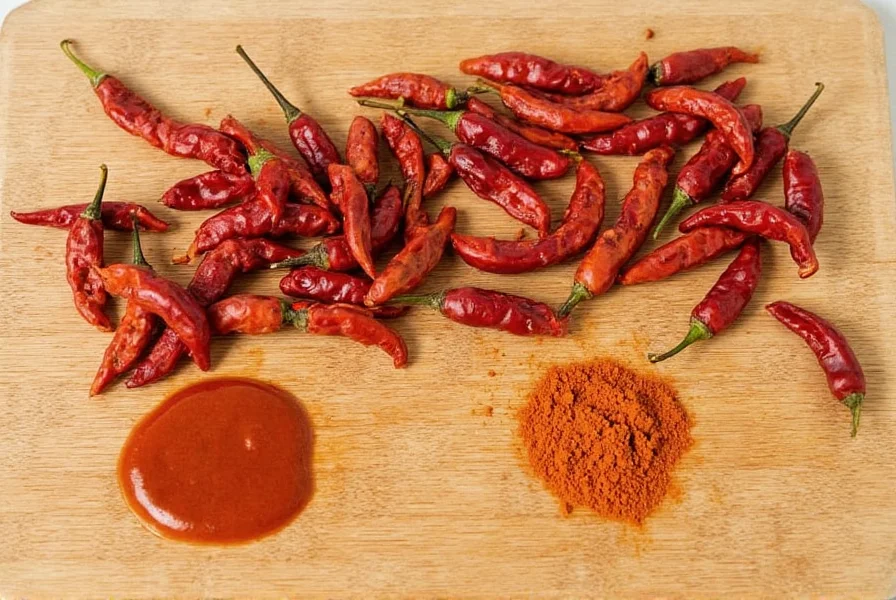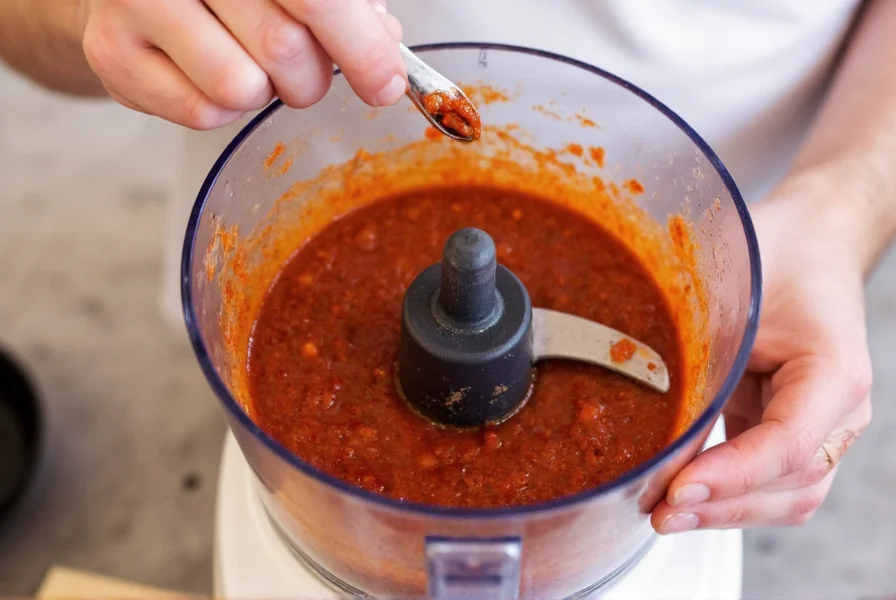Understanding chipotle peppers begins with recognizing their transformation process. Fresh green jalapeños undergo smoke-drying for several days, which concentrates their flavor while adding complex smokiness. This traditional preservation method dates back to pre-Hispanic Mesoamerica, where indigenous communities developed smoking techniques to extend pepper shelf life while enhancing culinary properties.
Chipotle Pepper Varieties and Forms
Chipotle peppers appear in multiple forms, each suited to different culinary applications. The most common varieties include chipotles morita (reddish-brown, slightly fruitier) and chipotles meco (tan-colored, more intensely smoky). Recognizing these differences helps home cooks select appropriate forms for specific recipes.
| Form | Characteristics | Best Uses | Shelf Life |
|---|---|---|---|
| Dried whole | Intense smokiness, requires rehydration | Broths, stews, complex sauces | 6-12 months |
| Canned in adobo | Soft texture, tangy tomato-based sauce | Marinades, quick sauces, dips | 1 month refrigerated after opening |
| Chipotle powder | Concentrated heat, consistent flavor | Dry rubs, spice blends, seasoning | 6 months |
| Chipotle flakes | Moderate heat, visible pepper pieces | Pizza, roasted vegetables, finishing touch | 4-6 months |
Flavor Profile and Heat Analysis
Chipotle peppers deliver a unique flavor profile combining moderate heat with pronounced smokiness and subtle fruitiness. Their Scoville rating of 2,500-8,000 places them milder than habaneros but hotter than poblano peppers. The smoking process develops complex flavor compounds that transform the jalapeño’s bright vegetal notes into deep, earthy characteristics with hints of tobacco and dried fruit.
When working with chipotle peppers in adobo sauce, remember that the sauce itself contains vinegar, garlic, and spices that contribute additional flavor dimensions. The seeds contain concentrated capsaicin, so removing them reduces heat while maintaining smoky flavor. For beginners exploring how to use chipotle peppers in recipes, start with half a pepper and adjust to taste.

Practical Cooking Applications
Mastering chipotle pepper usage requires understanding their role in different dishes. For soups and stews, rehydrate dried chipotles by soaking in hot water for 20 minutes before blending into a smooth puree. This technique creates the base for authentic mole sauces and complex braising liquids. When using canned chipotles, finely mince both the peppers and some adobo sauce for even flavor distribution.
One frequently asked question concerns chipotle pepper substitutions. If unavailable, combine smoked paprika with a pinch of cayenne for similar flavor (though not identical). Ancho chilies provide comparable heat with less smoke, while smoked salt offers a non-spicy alternative. Understanding these alternatives proves valuable when exploring chipotle pepper recipes for beginners.
Storage and Preservation Techniques
Proper storage maintains chipotle pepper quality. Keep dried whole peppers in airtight containers away from light and moisture. Canned varieties require refrigeration after opening and maintain quality for about one month. For longer preservation, freeze individual chipotles from adobo cans in ice cube trays with sauce, then transfer to freezer bags.
Creating homemade chipotle powder ensures maximum freshness. Simply toast dried chipotles briefly in a dry skillet, then grind in a spice grinder until fine. Store in dark glass containers to preserve volatile flavor compounds. This approach delivers superior results compared to commercial products when following how to use chipotle peppers in recipes requiring intense smokiness.

Common Misconceptions Clarified
Several misunderstandings surround chipotle peppers. First, they’re not a distinct pepper variety but specifically smoke-dried jalapeños. Second, their heat level varies significantly based on growing conditions and processing methods. Third, the adobo sauce in canned products isn’t traditional—it’s a modern addition for flavor and preservation.
When comparing chipotle pepper vs jalapeño, recognize that fresh jalapeños offer bright, grassy notes with immediate heat, while chipotles provide complex smokiness with delayed, longer-lasting warmth. This fundamental difference explains why they’re not direct substitutes in recipes requiring authentic chipotle peppers in adobo sauce characteristics.
Nutritional Considerations
Chipotle peppers retain many nutritional benefits of fresh jalapeños despite processing. They remain rich in capsaicin (associated with metabolic benefits), vitamin C, and antioxidants. The smoking process may reduce some heat-sensitive nutrients but develops additional beneficial compounds through the Maillard reaction. When using chipotle powder substitute options, note that commercial blends sometimes contain fillers that dilute nutritional value.
Signature Recipe Applications
Chipotle peppers shine in specific culinary applications that showcase their unique properties. They’re essential in traditional Mexican mole negro, where they contribute smokiness that balances chocolate and spice. In modern cuisine, they enhance barbecue sauces, add depth to vegetarian chili, and create complex marinades for proteins. For accessible chipotle pepper recipes for beginners, try adding one minced chipotle to mayonnaise for an instant smoky spread.
Frequently Asked Questions
What exactly is a chipotle pepper?
A chipotle pepper is a smoke-dried jalapeño pepper. The name comes from the Nahuatl (Aztec) words 'chil' (chili) and 'poctli' (smoked). This drying process transforms the fresh green jalapeño into a reddish-brown pepper with concentrated smoky flavor and moderate heat.
How hot are chipotle peppers compared to other chilies?
Chipotle peppers measure between 2,500-8,000 on the Scoville scale, making them moderately spicy. They're milder than habaneros (100,000-350,000 SHU) but hotter than poblanos (1,000-2,000 SHU). The heat builds gradually and lasts longer than fresh jalapeños due to the concentration from drying.
What's the difference between chipotle peppers in adobo and dried chipotles?
Chipotle peppers in adobo are rehydrated dried chipotles preserved in a tangy tomato-vinegar sauce with spices. Dried chipotles are just the smoke-dried peppers without liquid. The adobo version offers immediate usability and additional flavor complexity, while dried chipotles require rehydration but provide more concentrated smokiness.
How can I reduce the heat of chipotle peppers in my recipe?
To reduce heat, remove the seeds and inner membranes where capsaicin concentrates. Soaking rehydrated chipotles in milk or cream before use can also mellow the heat. Start with half a pepper, blend into your dish, then gradually add more until desired heat level is reached. Remember that heat perception increases as food sits, so allow 15-20 minutes before final adjustment.
Can I make my own chipotle powder at home?
Yes, you can make chipotle powder by toasting dried chipotle peppers in a dry skillet for 1-2 minutes until fragrant, then grinding them in a spice grinder until fine. Sift to remove large pieces. Store in an airtight container away from light. Homemade powder has more intense flavor than commercial versions but lasts only 3-6 months before flavor degrades.











 浙公网安备
33010002000092号
浙公网安备
33010002000092号 浙B2-20120091-4
浙B2-20120091-4